1. SALT
1.1. Scientific name
1.1.1. Sodium Chloride (NaCl)
1.1.1.1. One Sodium cation (Na+) for every Cloride Anion (Cl-)
1.1.1.2. Chemical formula: NaCl
1.1.1.3. Table salt
1.1.1.4. Equal numbers of Sodium Cations and Chloride Anions Arranged in repeating 3-dimensional structure with alternate of each other in 3 dimension
1.1.1.5. 40% sodium (Na Sodium Cation) and rest Choride (Cl- Chloride Anions)
1.2. An essential substance for chemistry
1.2.1. Salt (NaCl), sodium chloride, mineral substance of great importance to human and animal health, as well as to industry. The mineral form halite, or rock salt, is sometimes called common salt to
1.3. Formula
1.3.1. 40% sodium (Sodium Cations Na+) & reste 60% Cl-
1.3.1.1. 60gr Cl-/40gr Na+
1.4. Usages
1.4.1. Flavoring
1.4.2. Preserving food
1.4.3. Tanning/Dyeing Bleaching
1.4.4. Production of soap, pottery and soap
1.4.5. Industrial chemistry (wide use)
1.4.6. 1. Used in cooking food as well as for cooking gas. 2. Used as a preservative in pickles and in curing meat and fish. 3. Used in the manufacture of soap. 4. Used to melt the ice in winter in cold countries. 5. Used for making chemical likes washing Soda, baking soda etc.
1.5. HYPER/HYPOnatremia
1.5.1. specific causes of hypernatremia include: Dehydration or a loss of body fluids from prolonged vomiting, diarrhea, sweating or high fevers. Dehydration from not drinking enough water. Drugs such as steroids, licorice, and certain blood pressure lowering medicines.
1.5.1.1. Kidney stones High Blood pressure Cardiovascular disease and stroke Plaques in the arteries
1.5.2. Hyponatremia occurs when your blood sodium level goes below 135 mEq/L. When the sodium level in your blood is too low, extra water goes into your cells and makes them swell. This swelling can be dangerous especially in the brain, since the brain cannot expand past the skull. Clinical consequences of hyponatremia include neurologic dysfunction, decreased mental function, cerebral edema, gait disturbances and falls, osteoporosis, and fractures.
1.5.2.1. Affects brain activity person sluggish, lethargic Muscle twitches Seizures, loss of consciousness, comas
1.5.3. INTAKE:
1.5.3.1. Minimum need: 200-500mg/day
1.5.3.2. Adequate intake for adules: 1.5g/day of sodium which is 3.8g salt /day
1.5.3.3. Lower for children
1.5.3.4. Children less than 1 year: no salt because kidneys are not mature
1.6. Electricity
2. SALTING
2.1. preservation of food with edible salt
2.2. one form of curing (fumaison)
2.3. related to pickling (more specifically brining=preparing food with brine, ie salty water)
2.4. One of the oldest methods to preserve food
2.4.1. fish
2.4.2. vegetable
2.4.3. Before congelation
2.4.3.1. inhibits the growth and survival of undesirable micro organisms
2.4.3.2. prevents rapid spoilage= expand life
2.5. HOW?
2.5.1. Most bacteria (fungi) and other pathogenic organisms DO NOT SURVIVE in saltic environment
2.5.2. promotes GROWTH of desirable mirco-organisms in various fermented foods
2.5.3. contains COMPOUNDS with preservative effects
2.5.3.1. also in food supply
2.5.4. Reduces water activity of foods (preservative)
2.5.4.1. Property of chloride ions to associate with water molecules: meat .. less water for microorganisms
2.6. METHOD + PRESERVE (why?)
3. PICKLING
3.1. WHAT??
3.1.1. The process of preserving or extending shelf life of food by (1° anaerobic fermentation in Brine or (ii) immersion in vinegar
3.2. PRESERVING + ANAEROBIC FERMENTATION + 1 METHODS
3.2.1. 2 METHODS
3.2.1.1. immersing food in acidic solution (vinegar)
3.2.1.2. Fermentation
3.2.1.2.1. reaction between food's sugar+naturally present bacteria (eg moisture)
3.3. PICKLING AND SALTING:DIFFERENT!!
3.3.1. In salting: salt creates a hostile environment for the bacteria causing decay
3.3.2. Pickling: the salty solution creates a fRIENDLY environment for the "good" bacteria to produce THE NECESSARY ACIDITYin order for food to be protected from the harmful bacteria
